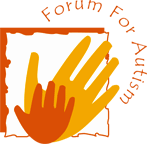What is Autism?
B
riefly, Autism is a life long developmental disorder that typically occurs in the first three years of life. It causes impairment or disturbance in three main areas Social skills, communicative (verbal as well as non-verbal) skills and in their repetitive and restricted behaviors. Autistic individuals may show abnormal responses to sensations. Any one or more of the senses may be affected. All these difficulties manifest themselves in behaviours i.e. abnormal ways of relating to people, objects and events in the environment.
Autism is a ‘spectrum disorder,’ because the severity of symptoms ranges from a mild learning and social disability to a severe impairment, with multiple problems and highly unusual behavior. The disorder may occur alone, or with accompanying problems such as mental retardation or seizures. Autism is not a rare disorder, being the third most common developmental disorder, more common than Down’s Syndrome. Typically, about 1 in a population of 150 people will be autistic or have autistic symptoms. 80% of those affected by autism are boys. Autism is found throughout the world, in families of all economic, social, and racial backgrounds. Doctors, politicians, and rickshaw drivers alike all have autistic children.
Since people afflicted by autism are very diverse in their skills and intrinsic intelligence, they have been categorized under a spectrum called the Autism Spectrum Disorder (ASD).
Contrary to popular belief, autistic people can function in the regular world. Most mentally challenged children who fall under ASD attend integrated special schools, several high functioning children attend regular schools and some of them have even graduated from premiere institutions.
At present, there is no cure for autism. The only consistently effective treatment for autism is a structured training programme. Therefore, a combination of a good school with autism-specific trained teachers and parent training is the best known treatment.
Autistic children can make significant progress if the intervention is appropriate and consistent. Early, accurate diagnosis and intervention, before the child is five, is especially crucial to the child's progress. It is for this reason that spreading awareness about autism is so necessary.


